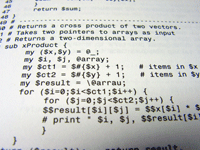|
The WAP protocol was designed to show internet contents on
wireless clients, like mobile phones.
What you should already know
Before you continue you should have a basic understanding of the
following:
- WWW, HTML and the basics of building Web pages
- JavaScript
- XML
If you want to study these subjects first, before you start reading about WAP
and the wireless markup language WML, you can find the tutorials you need at W3Schools' Home Page.
What is WAP?
The wireless industry came up with the idea of WAP. The point of this
standard was to show internet contents on wireless clients, like mobile
phones.
- WAP stands for Wireless Application Protocol
- WAP is an application communication protocol
- WAP is used to access services and information
- WAP is inherited from Internet standards
- WAP is for handheld devices such as mobile phones
- WAP is a protocol designed for micro browsers
- WAP enables the creating of web applications for mobile devices.
- WAP uses the mark-up language WML (not HTML)
- WML is defined as an XML 1.0 application
The Wireless Application Protocol
The WAP protocol is the leading standard for information services on wireless
terminals like digital mobile phones.
The WAP standard is based on Internet standards (HTML, XML and TCP/IP). It
consists of a WML language specification, a WMLScript specification, and a
Wireless Telephony Application Interface (WTAI) specification.
WAP is published by the WAP Forum, founded in 1997 by Ericsson, Motorola,
Nokia, and Unwired Planet. Forum members now represent over 90% of the global
handset market, as well as leading infrastructure providers, software developers
and other organizations. You can read more about the WAP forum at our WAP Forum page.
WAP Micro Browsers
To fit into a small wireless terminal, WAP uses a Micro Browser.
A Micro Browser is a small piece of software that makes minimal demands on
hardware, memory and CPU. It can display information written in a restricted
mark-up language called WML.
The Micro Browser can also interpret a reduced version of JavaScript called
WMLScript.
What is WML?
WML stands for Wireless Markup Language. It is a mark-up
language inherited from HTML, but WML is based on XML, so it is much stricter
than HTML.
WML is used to create pages that can be displayed in a WAP browser. Pages in
WML are called DECKS. Decks are constructed as a set of CARDS.
What is WMLScript?
WML uses WMLScript to run simple code on the client. WMLScript is a light
JavaScript language. However, WML scripts are not embedded in the WML pages. WML
pages only contains references to script URLs. WML scripts need to be compiled
into byte code on a server before they can run in a WAP browser.
Visit our WMLScript
tutorial to learn more about scripting in WML documents.
Examples of WAP use
- Checking train table information
- Ticket purchase
- Flight check in
- Viewing traffic information
- Checking weather conditions
- Looking up stock values
- Looking up phone numbers
- Looking up addresses
- Looking up sport results
FAQ about WAP
These are frequently asked question about WAP:
- What is WAP?
- Who is WAP for?
- How does WAP relate to standardization bodies?
- How is WAP related to Internet standards?
- What is the status of WAP?
- What is the future of WAP?
We will try to answer most of these questions. In the meantime read the
answers at: http://www.wapforum.org/faqs/index.htm.
|


